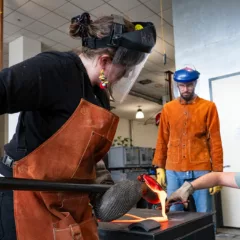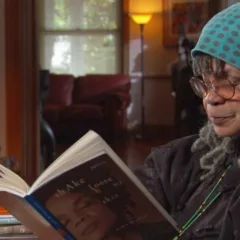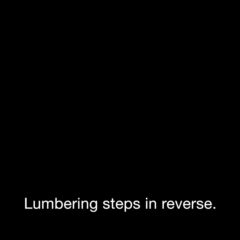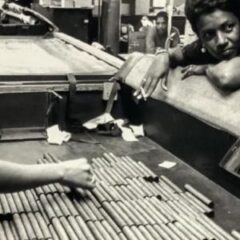This show is a record of all of the types of art created by the People’s Paper Co-op over the course of 10 years of activism and making. This ambitious enterprise includes documentary-style videos, posters, photographs, sculpture, poetry, and more. Overall, the work is immensely affecting and useful in communicating abolitionist principles. It is effective in pushing forwards the goal of bringing incarcerated women home to their communities.
The People’s Paper Co-op (PPC) began in expungement clinics- places for folks with legal records to go to get them removed or expunged. They would work with lawyers and when the records were wiped, shred them and make them into paper. This expungement is more than a metaphor, carrying around legal records can limit people from access to housing, employment, and more. To me the most beautiful thing about this work was the words of the participants: “I am free! I feel like my dreams are coming true! I feel like I can do anything! Empowered! I no longer have this fear of becoming unsuccessful! I am invincible! I am a phenomenal woman!”The display of the paper, hung clothesline style, didn’t convey these messages aesthetically, but the words of the participants carry the message through.
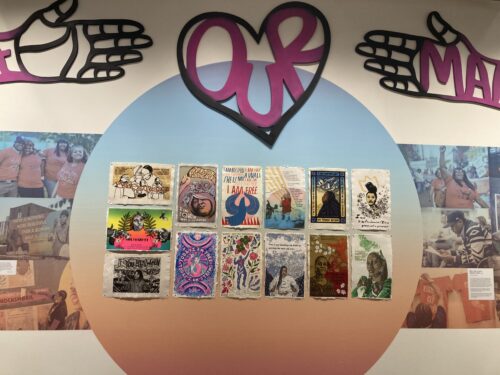
Upon turning the corner, into a room of large brilliant turquoise, marigold yellow, purple, and indigo framed portraits of formerly incarcerated women, a series of small polaroid photographs of the participants, found in the first room, contrast sharply with these larger-than-life depictions of the women in the second and third parts of the gallery. Sunset and sunrise colors explode throughout, a reminder of how much daylight has been taken away from the incarcerated.
There are many Black Mama’s Bail Out posters on display. These are posters that have been sold and distributed widely to fund Mother’s Day bail payments and to lobby support for movements like ending cash bail. The graphics have been used on banners, flyers, billboards, tee shirts, and more. They were created using words from PPC fellows, formerly incarcerated women who are part of the People’s Paper Co-op, as inspiration for artists around the country to create the images. The images were tremendously effective; Dynamic graphics and colors that held and grabbed attention and got their messages across. They operate as both art and message, and are effective in both.
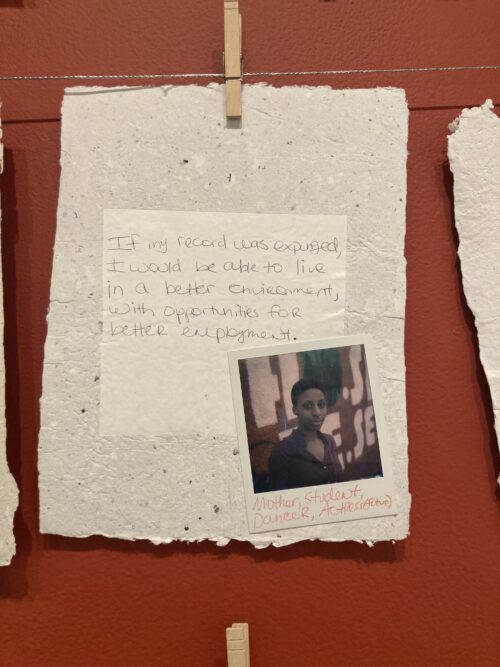
The most resonant parts of the exhibition were the written and spoken words of the women. The documentary in the third room Wide Open featured many beautiful takeaways I will carry with me. The interviewees, women sentenced to life in their adolescence, who were now being released. One woman spoke about the smell of the air on the day she got released, and another talked about how the prison was another dimension. For this documentary, the PPC fellows did the interviews and gave editing feedback. The documentary was also screened within prisons in addition to using it as a tool for activism, a way to send love to those they cannot visit.
As I looked through the gallery, I wondered where the direct hand of the PPC fellows was in the artwork. I saw them in their photographs and heard them in interviews and poetry. I was unable to find a visual work that the PPC fellows had directly made, without being filtered through intermediary artists. The fellows provided words and instructions to advise the artists on how to craft the images and sculptures. The exhibited artworks are designed well, and are successful in their purpose. I would be excited to see the hands of the PPC fellows moving the materials and wonder if that will be included in the future.
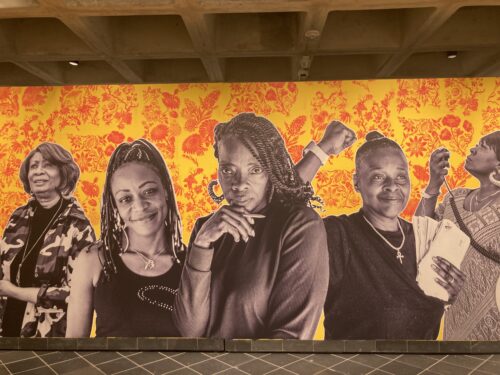
I left “Let’s Get Free” affected by the words of the participants and fellows. In one quote from Wide Open a woman spoke about those still inside the prison and said she was trying “to speak them into existence out here.” That is a beautiful summary of the curation. This work is fiercely hopeful. Speaking into existence of the day we know will come, the day that prison walls come down.
To end here’s an excerpt from “On the Day They Come Home” a collective poem by Tamika Bell, Paulette Carrington, Starr Granger, Ivy Johnson, and Yvonne Newkirk.
“On the day they come home, we’re gonna be there and it’s gonna be beautiful.
The sun is shining and there’s a rainbow in the sky,
The clouds will form into a hand like it’s releasing everyone,
Then into a smile that’s smiling down on everyone.
The air smells fresh, smells like flowers.
Everybody is real colorful, you know, bright and smiles.
We’re clapping and hugging;
People in wheelchairs, people with canes and crutches,
We’ve aged while waiting for our loved ones to come home.
And then we see them coming towards the gate,
But they’re not walking, they’re running.
They’re so happy to leave. They’re running out,
Screaming, we finally made it!”


